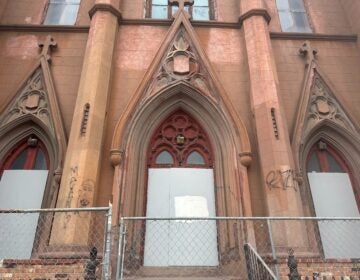Mother Bethel Q&A

Mother Bethel AME Q&A
Respondent: Rev. Jeffrey Leath
1. Mother Bethel is one of the most significant landmarks to African-American history, the birthplace of the AME denomination. What is your congregation’s role in the history of the waterfront? How does this the congregation’s history, building and place illustrate the role of the AME Church in Philadelphia? Please elaborate on the significance of Richard Allen and Absalom Jones. What challenges has Mother Bethel faced?
I am not so sure we ever saw ourselves as “waterfront.” Indeed we are. Location was clearly significant in the early 1800’s as the church was accessible to much of the “waterfront” activity. For example, Richard Allen taking in Haitian refugees was a function of both his benevolent spirit and the proximity to the docks, I imagine. The early westward move of The African Episcopal Church of St. Thomas put her in a decidedly different position in the rapidly changing city.
For Allen and Jones, it was key to be in the middle of commerce and industry. They had a joint venture with a nail factory located next to St. Peter’s. With the emergence of the Underground Railroad, accessibility proved to be key to service.
Recognized as a central part of the community, the church was the focal point of mob violence on a number of occasions. In addition to external threats, the church has experience more than a few rough days around governance issues.
2. How has your congregational make-up and ministry evolved over the past fifty years? What sorts of people attend services at Mother Bethel and where do they come from? What has drawn them to this church in particular?
The last 50 years have been the coasting years of the momentum created in the 40 years which preceded them. The migrations brought many to Philadelphia between 1910 and 1960. The interesting mix of “native” Philadelphians and those with roots in the South, especially South Carolina, yielded a rich experience which began to decline in the 1960’s. Today there is a small professional constituency along with a majority working class congregation. 40% are retired!
Newcomers are attracted by the history and proximity to their Center City school/job. Balance presentation of traditional and modern elements invites many.
3. What are some of your thoughts about the gentrification of Queen Village in the past decade? How has this affected your church’s mission and congregation?
Although the impact to the congregation has been minimal, the impact to mission has been substantial. Suddenly, we have awakened to a community where it is harder to render service. The new folks don’t need food and the same kind of encouragement. Most of the members who vacated Queen Village has taken a more holy, less stressed address.
4. What are your feelings about the proposed waterfront developments, not just casinos but also residential and commercial. How do you feel these will affect your ministry and your church?
It is hard to trust the motives of development. Traffic and other access matters are small indications of either selfish or incompetent planning. The folks who say “trust” us forget that we have done that, and we have been burned.
A part of the “burn” is not just building, but sustainability. One of my favorite places 25 years ago was Head House Square. Do you remember the Rusty Scupper? Look at the quick death and the foul result of the un-interred remains. 25 Years! The “planners” have a long way to go with me to convince me they know how to develop a plan that works. The waterfront is more than politics at is expected… it has been planning at its worst.
So far I have looked for the difference in the Center City Churches related to the renaissance. It is slow. For my African American congregation, it is not even registering. What is the proportion of African Americans move into the Center City revival? What will be the percentage moving on the waterfront? The percentage we lost in the Society Hill makeover was substantial. I don’t see a recovery of all that was lost.
5. What do you see as the future of Mother Bethel? You’re currently undergoing a massive renovation campaign–how was the funding secured?
Our past is our future!
With a solution to the parking challenge, we could compete with most of the churches in the city. The African American Church is Philadelphia is a commuting phenomenon. You need parking and SEPTA lines.
Funding for the current work came through a Save America’s Treasures Grant, City, State, Foundation and Congregational funds. We are about $500,000 short at the moment.
In a perfect world, we could sustain a congregation 3 times our present size. We would construct a new building to handle our history mission and the main building would address our spiritual mission.
6. How has the construction of I-95 affected your congregation?
Not sure. Even without the 95 debacle, the housing stock had deteriorated.
7. In a sentence, what does the phrase “Holy Experiment” mean to you in 2007?
The coexistence of the religion of secularity and the religion of those with more traditional moral and spiritual values.
WHYY is your source for fact-based, in-depth journalism and information. As a nonprofit organization, we rely on financial support from readers like you. Please give today.






